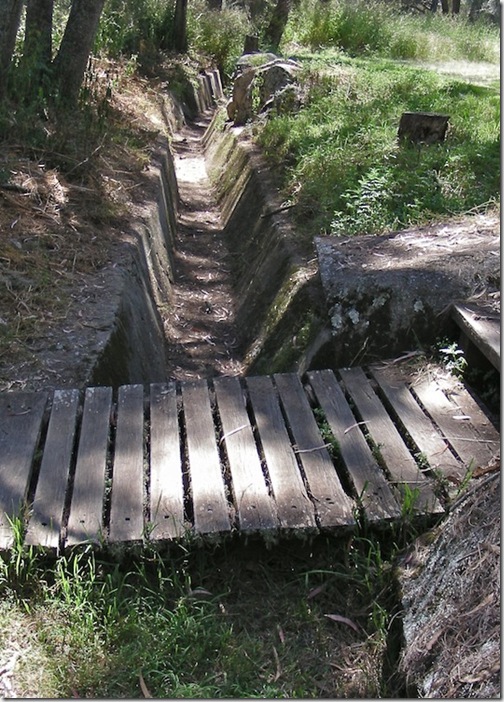Far more of the mine machinery survived then, and there was still an old caretaker living on the site attempting to look after it, although I don’t think that he had been paid for a number of years.
We used to lie on the grass and look up at the tall chimney. The moving clouds made it look as though it was about to fall, something that was a bit scary although we knew that we were safe. However, despite our frequent visits, we actually knew very little about the place.

Hillgrove’s rise began in 1877 when lodes of antimony were found were in the Baker’s Creek gorge, several kilometres south-west of the present village.
By 1881, the site was being worked by John Bracken, Peter Daly and James Elliot who, noticing specks of gold, decided to concentrate on that rather than the antimony. Bracken called the mine Eleanora in honour of his wife.
The Eleanora mine was never very profitable because the sulphide in the antimony made the extraction of the gold costly and it was soon eclipsed by a far more profitable venture.
George Smith, a shareholder in the Eleanora mine, was in the habit of searching nearby country In March 1887 he found a rich outcrop of gold near the bottom of the gorge. After three week’s investigation, Smith pegged out his claim.
Initially, Smith’s claims for his new mine were treated with scepticism. However, he formed a small partnership to pay the purchase of equipment, leading to the recovery within a short while of gold valued at £2,500. News of the success brought 1,500 people to the field in 1888, the same number the following year. Smith sold out his claim to the newly forming Baker’s Creek Goldmining Company. By the time the mine closed in 1921, Baker’s Creek had yielded 269,848 ounces, about seven-and-a-half tonnes of gold!
As had happened earlier on the Upper Clarence gold fields, Smith’s success generated a speculative frenzy. Ridiculous prices were demanded for shares in unproven claims, but a number of the new mines were successful. In 1896, the Hillgrove goldfield produced no less than 28,501 ounces, the highest return in the colony for that year.
From that point the field declined in the face of high costs and diminishing yields as the mining companies sank shafts deeper into the gorge. At the Baker’s Creek mine, the shaft eventually reached 1,700 feet.
The closure of the Baker’s Creek mine in 1921 was not quite the end of that story. In 1937, the mine was reopened by the New Baker’s Creek Company, only to close a few years later, with the company finally wound up in 1954. The old caretaker we met must have been the last surviving employee.
Note to readers: This post appeared as a column in the Armidale Express Extra on 19 June 2013. I am repeating the columns here with a lag because the columns are not on line outside subscription. You can see all the Belshaw World and History Revisited columns by clicking here for 2009, here for 2010, here for 2011, here for 2012, here for 2013
The photo by Gordon Smith shows the concrete flume, part of the hydro electric power station supplying Hillgrove, the hydro power station in Australia.










No comments:
Post a Comment